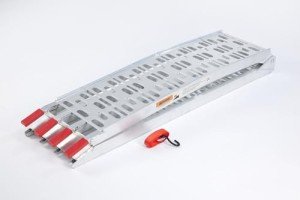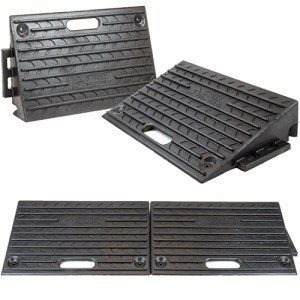
Metal Ramps For Wheelchairs
Add a review FollowOverview
-
Founded Date November 13, 1954
-
Sectors Remote AI Job
-
Posted Jobs 0
-
Viewed 3
Company Description
9 . What Your Parents Taught You About Wheelchair Ramps For Homes
Wheelchair Ramps for Homes: A Comprehensive Guide
Producing a barrier-free environment in a home is important for making sure comfort and availability for locals and visitors with mobility difficulties. Wheelchair ramps are a crucial element of this effort, allowing simpler access to buildings and making daily life more workable for individuals with disabilities. This post dives deep into the importance of wheelchair ramps, their types, considerations for setup, and upkeep pointers.
Why Are Wheelchair Ramps Important?
Wheelchair ramps serve a crucial function in improving Mobility Ramps For Home. They are specifically important for:

- Accessibility: Ramps permit individuals who utilize wheelchairs, walkers, or have difficulty climbing up stairs to get in and leave buildings smoothly.
- Self-reliance: With appropriate ramp access, individuals can walk around their surroundings individually, resulting in enhanced lifestyle.
- Security: Ramps reduce the danger of accidents associated with stair climbing up for people with mobility obstacles.
Kinds Of Wheelchair Ramps
When thinking about Wheelchair Ramps For Homes (https://Schoolido.lu/user/clothtwist91), it’s necessary to comprehend the various types offered. Here’s an overview:
| Type of Ramp | Description | Pros | Cons |
|---|---|---|---|
| Portable Mobile Ramps | Lightweight ramps that can be moved as needed. | Easy to keep and transport. | Restricted length; may not be suitable for all homes. |
| Irreversible Ramps | Constructed to be a long-term fixture of a home, usually made of concrete or wood. | Resilient and can accommodate any height. | More pricey and require professional setup. |
| Modular Ramps | Sectional ramps that can be assembled and customized on-site. | Customizable to fit particular needs. | May need assembly and carry greater costs. |
| Threshold Ramps | Developed for small rises, such as entrances or thresholds. | Perfect for basic shifts. | Restricted application for higher elevations. |
| Swimming pool Ramps | Utilized to supply access into pool. | Great for leisure areas. | Not suitable for all environments. |
Key Considerations for Installation
When planning to install a wheelchair ramp in a home, several aspects need to be considered:
-
Location and Space: Assess the location where the ramp will be installed. Make sure adequate area for the ramp without obstructing pathways.
-
Slope Ratio: According to the Americans with Disabilities Act (ADA), the advised slope for a wheelchair ramp is 1:12. This implies that for every inch of height, there must be at least 12 inches of ramp run.
-
Products: The materials used for constructing ramps can considerably impact their security and sturdiness. Common products include:
- Wood
- Aluminum
- Concrete
- Fiberglass
-
Building regulations: Always inspect local structure codes and guidelines, which might determine particular requirements for ramp style and installation.
-
Cost: Budgeting for ramp setup can vary commonly depending on the type and materials. Costs can range from a few hundred to several thousand dollars.
Maintenance of Wheelchair Ramps
To make sure durability and safety, routine upkeep of wheelchair ramps is a must. Here are some essential upkeep tips:
- Inspect Regularly: Check for any loose bolts, fractures, or damages every few months.
- Tidy the Surface: Keep the ramp surface area clear of debris, snow, and ice to prevent slipping.
- Check for Rust: For Metal Wheelchair Ramps ramps, keep an eye out for rust and treat any spots appropriately.
- Repaint if Necessary: Ensure that any painted surfaces are preserved to enhance exposure and avoid wear.
Frequently Asked Questions (FAQ)
1. Do I need an authorization to set up a wheelchair ramp?
Yes, in a lot of locations, you will need a permit to construct an irreversible wheelchair ramp. It’s important to inspect local regulations.
2. Can I develop my own wheelchair ramp?
Yes, DIY ramps are an option, particularly for portable and threshold ramps. Nevertheless, for long-term ones, it’s advisable to consult with a professional.
3. How steep can a wheelchair ramp be?
For residential ramps, a slope of 1:12 is recommended; nevertheless, steeper slopes may be allowable for short distances.
4. How large should a wheelchair ramp be?
The ADA suggests a minimum width of 36 inches for wheelchair ramps to allow enough area for maneuverability.

5. Can wheelchair ramps be set up outside?
Definitely! Many wheelchair ramps are developed for outdoor usage. Nevertheless, they must be constructed with weather-resistant products to withstand the aspects.
In summary, wheelchair ramps are vital in creating an accessible environment in the house. By understanding the different types, installation considerations, and upkeep requirements, house owners can ensure that their ramps serve their intended function efficiently. Whether it’s through improving self-reliance or guaranteeing safety, buying a wheelchair ramp could significantly improve the quality of life for those facing mobility difficulties. It’s not simply about performance– it’s about fostering inclusivity and creating areas that everyone can browse with ease.


